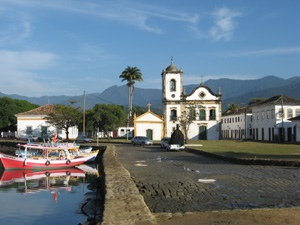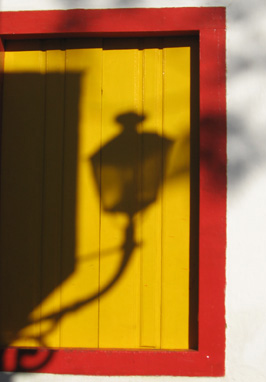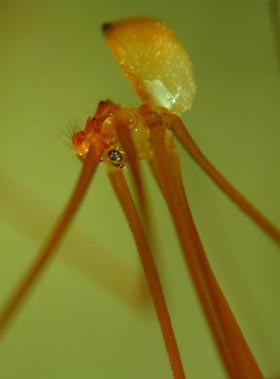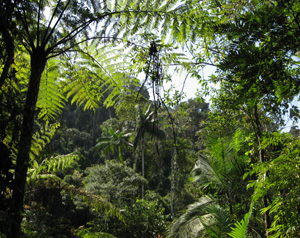 After the International
Arachnological Congress in São Pedro in August 2007 I took the
opportunity to visit some
remarkable places in the Atlantic Forest between São Paulo and
Rio de Janeiro.
My first trip brought me to Paraty, a beautifully preserved colonial
town
at the sea, once an important stopover for the gold to be shipped to
Europe,
now a town thriving mainly from tourism.
After the International
Arachnological Congress in São Pedro in August 2007 I took the
opportunity to visit some
remarkable places in the Atlantic Forest between São Paulo and
Rio de Janeiro.
My first trip brought me to Paraty, a beautifully preserved colonial
town
at the sea, once an important stopover for the gold to be shipped to
Europe,
now a town thriving mainly from tourism. Behind Paraty, the Serra do Mar mountain range provides not also the background for nice photos but is also covered with lush forest, some of which is quite well preserved. My emphasis was on pholcid webs which show an amazing range of architectural variation that is barely studied. About ten species of pholcids occur in any good locality in the Brazilian Atlantic forest, making this a good place to start gathering comparative data.


The simple sheet-web on the left is from a Tupigea species. Nothing has been known about the biology of any member of this endemic Brazilian genus before. Interestingly, another Tupigea species at the same locality lives in a very different habitat, under dead leaves in the leaf-litter, and builds very different webs, consisting of no more than a few threads attached to the leaf surface. Again very different are Mesabolivar webs, which may consist of two or three sheets and a complex mesh of additional lines above and sometimes even below the sheets (right).


 A second trip brougt me to
Penedo, a little town located in the Serra da
Mantiqueira about 100 km N of Paraty. Penedo itself may not be the
first
choice in a country like Brazil, but the forest above the town is
beautiful,
and the pholcid species overlap with Paraty was minimal. Other than
webs
I did my best to shoot a few good photos of the spiders themselves,
something
that is not easy in the relative darkness of the forest and with
animals
no more than 2-4 mm body length. For some examples see here.
A second trip brougt me to
Penedo, a little town located in the Serra da
Mantiqueira about 100 km N of Paraty. Penedo itself may not be the
first
choice in a country like Brazil, but the forest above the town is
beautiful,
and the pholcid species overlap with Paraty was minimal. Other than
webs
I did my best to shoot a few good photos of the spiders themselves,
something
that is not easy in the relative darkness of the forest and with
animals
no more than 2-4 mm body length. For some examples see here.